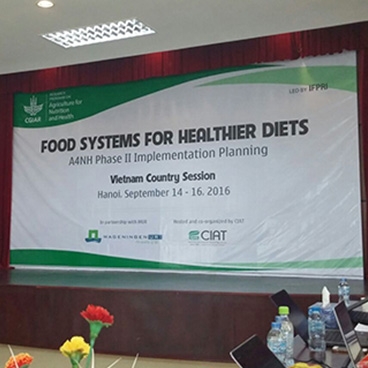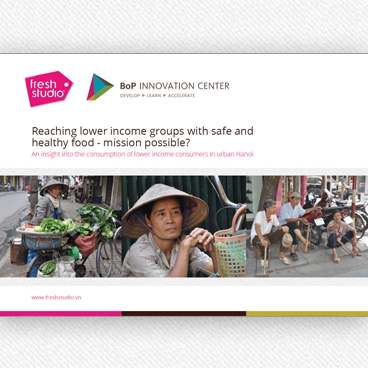Vietnam is in the process of providing the food essential for health and growth. Although the Vietnamese cuisine seems healthy at first side, however there is an upward trend towards either too little (with low quality) or too much (too much salt/sugar).
It is said that, currently Vietnam is facing the triple burden of malnutrition in Vietnam: (Chronic) undernutrition, micronutrient deficiencies and overweight. Food systems, encompassing all stage in post-harvesting from production to consumption can support the access to wholesome and affordable food.
The workshop ‘Food systems for healthier diets’ was a collaboration of CIAT and Wageningen UR and led by IFPRI. The workshop was an element of A4NH phase 2 Flagship Program. The workshop attendees consisted of among others research institutes, non-profit organisation, governmental bodies and private sector. The main aim of the workshop was to develop a common understanding and perspective and to identify and review key drivers of food system transformation and diet improvements in Vietnam.
Several keynote speakers were invited to share their thoughts on the different topics in the food systems and healthy diets area. Fresh Studio gave a presentation about the role of the private sector in Vietnam towards a sustainable and healthier food system. By illustrating several examples of Fresh Studios’ work along the value the significant involvement of the private sector was provided.
Download the presentation
Marion Klaver, 15th of September 2016
Workshop on Food Systems for Healthier Diets – A4NH, Hanoi



